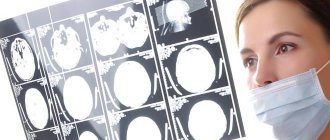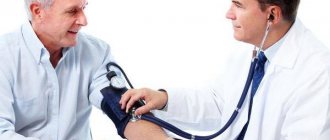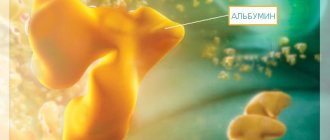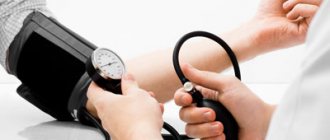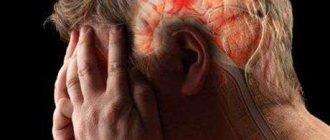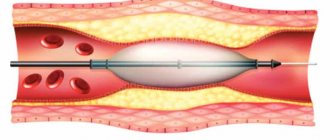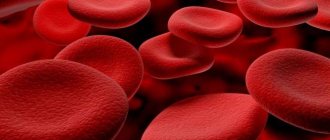General characteristics of lipid metabolism
A person's daily need for fat is about 70-80 grams. The body receives most of the substances through food (exogenous route), the rest is produced by the liver (endogenous route). Lipid metabolism is the process by which fats are broken down into acids needed to generate energy or store energy sources for later use.
Fatty acids, also known as lipids, constantly circulate in the human body. According to their structure and principle of action, these substances are divided into several groups:
- Triacylglycerols make up the bulk of lipids in the body. They protect subcutaneous tissues and internal organs, acting as thermal insulators and heat retainers. Triacylglycerols are always stored by the body in reserve, as an alternative source of energy, in case of shortage of glycogen reserves (a form of carbohydrates obtained by processing glucose).
- Phospholipids are a large class of lipids that get their name from phosphoric acid. These substances form the basis of cell membranes and take part in the metabolic processes of the body.
- Steroids or cholesterol are an important component of cell membranes, participate in energy, water-salt metabolism, and regulate sexual functions.
The diversity and level of content of certain types of lipids in the cells of the body is regulated by lipid metabolism, which includes the following stages:
- Breakdown, digestion and absorption of substances in the digestive tract (lipolysis). These processes originate in the oral cavity, where dietary fats, under the action of tongue lipase, break down into simpler compounds with the formation of fatty acids, monoacylglycerols and glycerol. In fact, the smallest droplets of fat, under the influence of special enzymes, are transformed into a thin emulsion, which is characterized by a lower density and an increased absorption area.
- Transport of fatty acids from the intestine to the lymphatic system. After initial processing, all substances enter the intestine, where, under the action of bile acids and enzymes, they break down into phospholipids. New substances easily penetrate through the intestinal walls into the lymphatic system. Here they are again converted into triacylglycerols, bind to chylomicrons (molecules similar to cholesterol and better known as lipoproteins) and enter the blood. Lipoproteins interact with cell receptors, which break down these compounds and take the fatty acids necessary for energy production and membrane construction.
- Interconversion (catabolism) of fatty acids and ketone bodies. In fact, this is the final stage of lipid metabolism, during which some of the triacylglycerols are transported along with the blood to the liver, where they are converted into acetyl coenzyme A (abbreviated as acetyl CoA). If, as a result of the synthesis of fatty acids in the liver, acetyl CoA is released in excess, part of it is transformed into ketone bodies.
- Lipogenesis. If a person leads a sedentary lifestyle and receives fat in excess, some of the breakdown products of lipid metabolism are deposited in the form of adipocytes (adipose tissue). They will be used by organisms in case of energy shortage or when additional material is needed to build new membranes.
Eicosanoids
Eicosanoids, including prostaglandins, thromboxanes, leukotrienes and a number of other substances, are highly active regulators of cellular functions. They have a very short T1/2, therefore they have effects as “local hormones”, influencing the metabolism of the cell producing them by an autocrine mechanism, and on surrounding cells by a paracrine mechanism. Eicosanoids are involved in many processes: they regulate the tone of smooth muscle cells and, as a result, affect the condition of the bronchi, intestines, and uterus. Eicosanoids regulate the secretion of water and sodium by the kidneys and influence the formation of blood clots. Different types of eicosanoids are involved in the inflammatory process that occurs after tissue damage or infection. Signs of inflammation such as pain, swelling, and fever are largely due to the action of eicosanoids. Excessive secretion of eicosanoids leads to a number of diseases, such as bronchial asthma and allergic reactions.
Substrates for eicosanoid synthesis
The main substrate for the synthesis of eicosanoids is arachidonic (ω-6-eicosatetraenoic) acid, which contains 4 double bonds at carbon atoms (5, 8, 11, 14). It can come from food or be synthesized from linoleic acid. In small quantities, ω-6-eicosatrienoic acid with three double bonds (5, 8, 11) and ω-3-eicosapentaenoic acid, which contains 5 double bonds in positions 5, 8, 11, 14, can be used for the synthesis of eicosanoids. 17. Both minor eicosanoic acids either come from food or are synthesized from oleic and linolenic acids, respectively.
Pathways for the biosynthesis of eicosanoids from arachidonic acid
Synthesis of leukotrienes, HETE (hydroxyeicosatetroenoates), lipoxins
More information: Leukotrienes
The synthesis of leukotrienes follows a different path from the synthesis of prostaglandins and begins with the formation of hydroxyperoxides - hydroperoxide deicosatetraenoates (HPETE). These substances are either reduced to form hydroxyeicosatetroenoates (HETEs) or converted to leukotrienes or lipoxins. GETE differ in the position of the hydroxyl group at the 5th, 12th or 15th carbon atom, for example: 5-GETE, 12-GETE.
Lipoxins (for example, the main lipoxin A4) contain 4 conjugated double bonds and 3 hydroxyl groups.
The synthesis of lipoxins begins with the action of 15-lipoxygenase on arachidonic acid, then a series of reactions occurs leading to the formation of lipoxin A4
Clinical aspects of eicosanoid metabolism
Slow-reacting substance for anaphylaxis (MRV-A) is a mixture of leukotrienes C4, D4 and E4. This mixture is 100-1000 times more effective than histamine or prostaglandins as a factor causing contraction of bronchial smooth muscle. These leukotrienes, together with leukotrine B4, increase the permeability of blood vessels and cause the influx and activation of leukocytes, and are also important regulators in many diseases, the development of which involves inflammatory processes or rapid allergic reactions (for example, bronchial asthma).
Use of eicosanoid derivatives as medicines
Although the effects of all types of eicosanoids are not fully understood, there are examples of the successful use of eicosanoid analog drugs to treat various diseases. For example, the analogues PG E1 and PG E2 suppress the secretion of hydrochloric acid in the stomach by blocking type II histamine receptors in the cells of the gastric mucosa. These medications, known as H2 blockers, speed up the healing of stomach and duodenal ulcers. The ability of PG E2 and PG F2α to stimulate contraction of the uterine muscles is used to stimulate labor.
Signs of lipid metabolism disorders
Congenital or acquired pathology of fat metabolism in medicine is called dyslipidemia (ICD code E78). Often this disease is accompanied by a number of symptoms reminiscent of atherosclerosis (a chronic disease of the arteries, characterized by a decrease in their tone and elasticity), nephrosis (damage to the kidney tubules), diseases of the cardiovascular and endocrine systems. With high triglyceride levels, acute pancreatitis syndrome may occur. Characteristic clinical manifestations of lipid metabolism disorders are:
- Xanthomas are dense nodular formations filled with cholesterol. Cover the tendons, abdomen, and torso of the feet.
- Xanthelasmas are cholesterol deposits under the skin of the eyelids. Fatty deposits of this type are localized in the corners of the eyes.
- The lipoid arc is a white or grayish-white stripe framing the cornea of the eye. More often, the symptom appears in patients over 50 years of age with a hereditary predisposition to dyslipidemia.
- Hepatosplenomegaly is a condition of the body in which the liver and spleen simultaneously increase in size.
- Skin atheroma is a cyst of the sebaceous glands that occurs as a result of blockage of the sebaceous ducts. One of the factors in the development of pathology is a disorder of phospholipid metabolism.
- Abdominal obesity is an excess accumulation of fatty tissue in the upper torso or abdomen.
- Hyperglycemia is a condition in which the level of glucose in the blood increases.
- Arterial hypertension is a persistent increase in blood pressure above 140/90 mm Hg. Art.
All of the above symptoms are characteristic of elevated lipid levels in the body. At the same time, there are situations when the amount of fatty acids is below normal . In such cases, characteristic symptoms will be:
- a sharp and causeless decrease in body weight, up to complete exhaustion (anorexia);
- hair loss, brittleness and splitting of nails;
- disturbances of the menstrual cycle (delay or complete absence of menstruation), reproductive system in women;
- signs of kidney nephrosis - darkening of urine, pain in the lower back, decreased volume of daily urine, formation of edema;
- eczema, pustules or other inflammations of the skin.
Article on the topic: 10 main vitamins for nursing mothers
Lithogenesis
When a person has consumed a lot of fat and there is enough of it to meet all the needs of the body, then its remnants begin to be deposited. Sometimes this can happen quite quickly because the person is consuming a lot of calories but not expending a lot of them.
Fat can be deposited both under the skin and on organs. As a result, a person’s weight begins to increase, which becomes the cause of obesity.
Causes
Lipid metabolism can be impaired as a result of some chronic diseases or be congenital. According to the mechanism of formation of the pathological process, two groups of possible causes of dyslipidemia are distinguished:
- Primary - inheritance from one or both parents of a modified gene . There are two forms of genetic disorders:
- hypercholesterolemia – a disorder of cholesterol metabolism;
- hypertriglyceridemia – increased content of triglycerides in blood plasma taken on an empty stomach.
- Secondary – the disease develops as a complication of other pathologies. Lipid metabolism disorders can be caused by:
- hypothyroidism – decreased function of the thyroid gland;
- diabetes mellitus is a disease in which glucose absorption or insulin production is impaired;
- obstructive liver diseases - diseases in which there is a violation of the outflow of bile (chronic cholelithiasis (formation of gallstones), primary biliary cirrhosis (an autoimmune disease in which the intrahepatic bile ducts are gradually destroyed).
- atherosclerosis;
- obesity;
- uncontrolled use of medications - thiazide diuretics, Cyclosporine, Amiodarone, some hormonal contraceptives;
- chronic renal failure - a syndrome of impairment of all renal functions;
- nephrotic syndrome is a symptom complex characterized by massive proteinuria (protein excretion along with urine), generalized edema;
- radiation sickness is a pathology that occurs during prolonged exposure of the human body to various ionizing radiation;
- pancreatitis - inflammation of the pancreas;
- smoking, alcohol abuse.
Predisposing factors play an important role in the development and progression of lipid metabolism disorders. These include:
- physical inactivity (sedentary lifestyle);
- postmenopause;
- abuse of fatty, cholesterol-rich foods;
- arterial hypertension;
- male gender and age over 45 years;
- Cushing's syndrome - excessive production of adrenal hormones;
- history of ischemic stroke (death of a part of the brain due to circulatory problems);
- myocardial infarction (death of part of the heart muscle due to cessation of blood flow to it);
- genetic predisposition;
- pregnancy;
- previously diagnosed diseases of the endocrine system, liver or kidneys.
Exchange process
Lipid metabolism: what is it? Doctors say that the concept of the metabolic process of fats is a composite one. A large number of elements take part in this process. When identifying system failures, attention is first drawn to the following:
- Fat intake.
- Split.
- Suction.
- Exchange.
- Metabolism.
- Construction.
- Education.
It is according to the presented scheme that lipid metabolism occurs in humans. Each of these stages has its own norms and meanings. When at least one of them is violated, it negatively affects the health of any person.
Classification
Depending on the mechanism of development, there are several types of lipid imbalance:
- Primary (congenital) - means that the pathology is hereditary. Clinicians divide this type of lipid metabolism disorder into three forms:
- monogenic – when the pathology is caused by gene mutations;
- homozygous - a rare form, which means that the child received the pathological gene from both parents;
- heterozygous - receiving a defective gene from the father or mother.
- Secondary (acquired) – develops as a consequence of other diseases.
- Nutritional – related to human nutritional characteristics. There are two forms of pathology:
- transient – occurs irregularly, more often on the next day after eating a large amount of fatty foods;
- constant – observed with regular consumption of foods high in fat.
The Fredrickson classification of dyslipidemias is not widely used among doctors, but is used by the World Health Organization. The main factor by which lipid metabolism disorders are divided into classes is the type of elevated lipid:
- The disease of the first type occurs due to genetic disorders. An increased content of chylomicrons is observed in the patient's blood.
- Type 2 lipid metabolism disorder is a hereditary pathology characterized by hypercholesterolemia (subtype A) or combined hyperlipidemia (subtype B).
- The third type is a pathological condition in which there is an absence of chylomicrons in the patient’s blood and the presence of low-density lipoproteins.
- The fourth type of disorder is hyperlipidemia (abnormally elevated lipid levels) of endogenous origin (produced by the liver).
- The fifth type is hypertriglyceridemia, characterized by an increased content of triglycerides in the blood plasma.
Doctors have summarized this classification, reducing it to just two points. These include:
- pure or isolated hypercholesterolemia – a condition characterized by increased cholesterol levels;
- combined or mixed hyperlipidemia is a pathology in which the level of both triglycerides and cholesterol and other components of fatty acids increases.
Risk factors and influences
Disorders of fat metabolism are primarily characterized by an increase in the amount of cholesterol and triglycerides in the blood. Lipid metabolism and its condition is an important aspect of the diagnosis, treatment and prevention of major heart and vascular diseases. Preventive treatment of blood vessels is required for patients with diabetes mellitus.
There are two main influencing factors that cause disturbances in lipid metabolism:
- Changes in the state of low-density lipoprotein (LDL) particles. They are uncontrollably captured by macrophages. At some stage, lipid oversaturation occurs, and macrophages change their structure, turning into foam cells. By staying in the vessel wall, they help accelerate the process of cell division, including atherosclerotic proliferation.
- Ineffectiveness of high-density lipoprotein (HDL) particles. Because of this, disturbances occur in the release of cholesterol from the endothelium of the vascular wall.
Risk factors are:
- gender: men and women after menopause;
- the aging process of the body;
- a diet rich in fat;
- a diet that excludes normal consumption of coarse fiber products;
- excessive consumption of cholesterol foods;
- alcoholism;
- smoking;
- pregnancy;
- obesity;
- diabetes;
- nephrosis;
- uremia;
- hypothyroidism;
- Cushing's disease;
- hypo- and hyperlipidemia (including hereditary).
Possible complications
Disorders of lipid metabolism can lead to a number of unpleasant symptoms, severe weight loss, and worsening of chronic diseases. In addition, this pathology in metabolic syndrome can cause the development of the following diseases and conditions:
- atherosclerosis, which affects the blood vessels of the heart, kidneys, brain, heart;
- narrowing of the lumen of blood arteries;
- formation of blood clots and emboli;
- the occurrence of an aneurysm (vascular dissection) or rupture of arteries.
Diagnostics
To make an initial diagnosis, the doctor conducts a thorough physical examination: assesses the condition of the skin and mucous membranes of the eye, measures blood pressure, and palpates the abdominal cavity. Afterwards, laboratory tests are prescribed to confirm or refute suspicions, which include:
- General clinical analysis of blood and urine. Conducted to identify inflammatory diseases.
- Blood chemistry. Biochemistry determines the level of blood sugar, protein, creatinine (a breakdown product of protein), uric acid (the end product of the breakdown of DNA and RNA nucleotides).
- Lipidogram - analysis of lipids, is the main method for diagnosing lipid metabolism disorders. Diagnostics shows the level of cholesterol, triglycerides in the blood and establishes the atherogenicity coefficient (the ratio of the total amount of lipids to cholesterol).
- Immunological blood test. Determines the presence of antibodies (special proteins that are produced by the body to fight foreign bodies) to chlamydia and cytomegalovirus. An immunological test additionally detects the level of C-reactive protein (a protein that appears during inflammation).
- Genetic blood test. The study identifies inherited genes that have been damaged. Blood for diagnosis is necessarily taken from the patient himself and his parents.
- CT (computed tomography), ultrasound (ultrasound) of the abdominal organs. They identify pathologies of the liver, spleen, pancreas, and help assess the condition of the organs.
- MRI (magnetic resonance imaging), radiography. They are prescribed as additional instrumental diagnostic methods when there is a suspicion of problems with the brain or lungs.
Article on the topic: Warfarin - instructions for use
Treatment of fat metabolism disorders
To eliminate the pathology, patients are prescribed a special diet with a limited intake of animal fats, but enriched with dietary fiber and minerals. In overweight people, the daily caloric intake is reduced and moderate physical activity is prescribed to normalize body weight. All patients are advised to give up or reduce alcohol consumption as much as possible. When treating secondary dyslipidemias, it is important to identify and begin treatment of the underlying disease.
To normalize the blood count and the patient’s condition, drug therapy is carried out. The following groups of drugs help eliminate unpleasant symptoms and improve lipid metabolism:
- Statins are a class of drugs that help lower bad cholesterol levels and increase the potential for lipid breakdown. Medicines from this group are used for the treatment and prevention of atherosclerosis and diabetes mellitus. They significantly improve the patient’s quality of life, reduce the incidence of heart disease, and prevent vascular damage. Statins can cause liver damage and are therefore contraindicated in people with liver problems. These medications include:
- Pravachol;
- Zokor;
- Crestor;
- Lipitor;
- Leskol.
- Cholesterol absorption inhibitors are a group of medications that prevent the reabsorption of cholesterol in the intestine. The effect of these drugs is limited, because a person receives only a fifth of bad cholesterol from food, the rest is produced in the liver. Inhibitors are prohibited for pregnant women, children, and during lactation. Popular medications in this group include:
- Guarem;
- Ezetimibe;
- Lipobon;
- Ezetrol.
- Bile acid sequestrants (ion exchange resins) are a group of medications that bind bile acids (containing cholesterol) when they enter the intestinal lumen and remove them from the body . When taken for a long time, sequestrants can cause constipation, taste disturbances, and flatulence. These include drugs with the following trade names:
- Questran;
- Colestipol;
- Lipantil 200 M;
- Tribestan.
- Antioxidant vitamins and Omega-3 polyunsaturated fatty acids are a group of multivitamin complexes that reduce triglyceride levels and reduce the risk of developing cardiovascular diseases. Such additives include:
- Vitrum Cardio Omega-3;
- ViaVit;
- Mirrolla capsules with Omega-3;
- AspaCardio.
- Fibrates are a group of drugs that reduce triglycerides and increase the amount of high-density lipoproteins (protective substances that prevent the development of cardiovascular disorders) . Medicines in this category are prescribed together with statins. Fibrates are not recommended for use by children or pregnant women. These include:
- Normolit;
- Lipantil;
- Lipanor;
- Bezalip;
- Gevilon.
Diet therapy
Lipid metabolism in the human body directly depends on what he eats. A properly formulated diet will alleviate the patient’s condition and help restore metabolic balance. A detailed menu, a list of prohibited and permitted foods is drawn up by a doctor, but there are also general rules regarding nutrition:
- Eat no more than 3 egg yolks per week (including eggs used for other food preparations).
- Reducing the consumption of confectionery products, bread, and baked goods.
- Replacing deep frying with stewing, steaming, boiling or baking.
- Exclusion from the diet of smoked meats, marinades, sauces (mayonnaise, ketchup), sausages.
- Increase in soto
- proper consumption of plant fiber (vegetables and fruits).
- There are only lean meats. When cooking, cut off visible fat and skin, remove rendered fat when preparing dishes.
Treatment with folk remedies
Traditional medicine can be used as an auxiliary therapy: decoctions, alcohol tinctures, infusions. For lipid metabolism disorders, the following recipes have proven themselves to be effective:
- Mix and grind 100 grams of the following herbs using a coffee grinder: chamomile, knotweed, birch buds, immortelle, St. John's wort. Measure 15 grams of the mixture, pour 500 ml of boiling water. Insist for half an hour. Take the medicine warm, adding a teaspoon of honey, 200 ml in the morning and evening. Every day you should prepare a new drink. Store the remaining mixture in a dark place. Duration of therapy is 2 weeks.
- Measure out 30 g of fireweed tea, pour 500 ml of boiling water over the herb. Bring the mixture to a boil over low heat, then leave for 30 minutes. Take the medicine 4 times a day before meals, 70 ml. The course of treatment is 3 weeks.
- Pour dried plantain leaves (40 grams) with a glass of boiling water. Leave for 30 minutes, then filter. Take 30 ml of the drink 3 times a day 30 minutes before meals. The course of therapy is 3 weeks.


